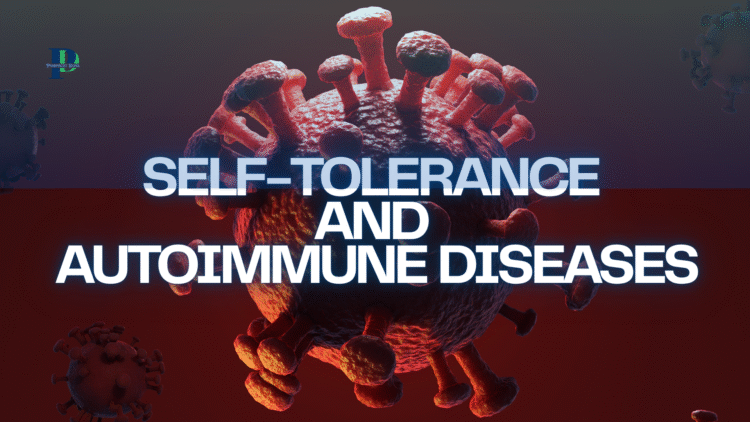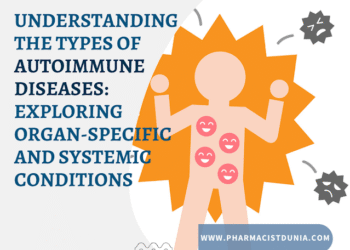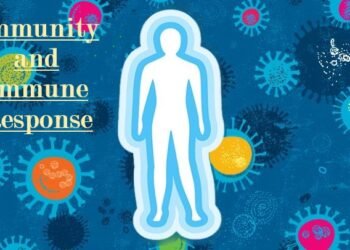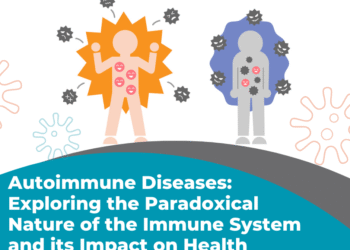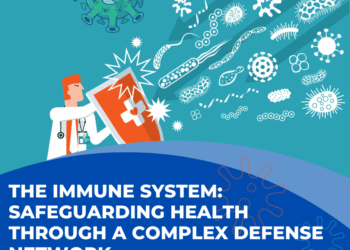Self-Tolerance and Autoimmune Diseases explores how immune system failures lead to chronic conditions. The immune system distinguishes between self and non-self-antigens to protect the body from harmful pathogens.
Self-Tolerance and Autoimmune Diseases
Self-tolerance refers to the immune system’s ability to recognize self-antigens and not mount an immune response against them.
There are instances when the immune system fails to distinguish between the body’s own cells and foreign substances, leading to the destruction of healthy tissues. This breakdown of self-tolerance is known as an autoimmune disease.
Understanding how self-tolerance develops and breaks down is essential for identifying the causes and mechanisms of autoimmunity.
In this article, we will delve into the concept of self-tolerance, exploring its two main forms, central and peripheral tolerance, as well as the mechanisms and causes behind autoimmune diseases.
Self-Tolerance Breakdown in Autoimmune Diseases
Self-tolerance is a vital mechanism that helps the immune system differentiate between self and non-self antigens, preventing the destruction of the body’s own cells and tissues. However, in autoimmune diseases, this self-tolerance breaks down, leading to an immune response against self-antigens.
Central and Peripheral Tolerance: Key Mechanisms
Self-tolerance is established through two primary mechanisms: central tolerance and peripheral tolerance.
Central Tolerance
Central tolerance refers to the elimination of immature lymphocytes that exhibit self-reactivity within the central lymphoid organs. Immature lymphocytes that recognize self-antigens undergo programmed cell death, known as apoptosis, preventing them from attacking the body’s own cells. This process ensures that only lymphocytes capable of recognizing foreign antigens leave the central lymphoid organs to mount immune responses.
Central tolerance primarily occurs in the central lymphoid organs, the thymus, and bone marrow. During T cell formation in the thymus, immature lymphocytes that recognize self-antigens with high affinity undergo apoptosis, eliminating potentially harmful self-reactive cells. This process, known as negative selection, helps to prevent autoimmunity by removing T cells that could attack self-antigens.
In the bone marrow, a similar process occurs for B cell development, ensuring the elimination of self-reactive B cells that could produce autoantibodies targeting self-antigens.

Central Tolerance
- Occurs in the primary lymphoid organs: T cells in the thymus and bone marrow for B cells.
- Involves the deletion (negative selection) of lymphocytes that strongly recognize self-antigens during their development.
- T cells recognizing self-antigens undergo apoptosis (clonal deletion) in the thymus.
- B cells undergo receptor editing or deletion if they are autoreactive.
Peripheral Tolerance
In peripheral tissues, mature lymphocytes that recognize self-antigens undergo a state of inactivation called anergy. They become unresponsive and are unable to mount an immune response against self-antigens. Alternatively, regulatory T lymphocytes can suppress the activity of self-reactive lymphocytes, ensuring their inactivity. Additionally, peripheral tolerance may involve apoptosis, leading to the destruction of self-reactive lymphocytes.
Peripheral tolerance mechanisms operate outside the central lymphoid organs, mainly in the peripheral tissues. In the periphery, mature lymphocytes encounter self-antigens. These lymphocytes can become anergic, meaning they are functionally inactive and do not initiate an immune response when they recognize self-antigens.
Additionally, regulatory T cells (Tregs) play a crucial role in maintaining peripheral tolerance. Tregs suppress the activation of autoreactive lymphocytes, preventing them from attacking self-antigens. Their suppressive functions help maintain immune balance and prevent autoimmune responses. Furthermore, apoptosis can be induced in self-reactive lymphocytes, ensuring their elimination and further safeguarding against autoimmunity.
Peripheral Tolerance
- Operates outside the primary lymphoid organs to control any self-reactive lymphocytes that escape central tolerance.
- Includes mechanisms such as:
- Anergy: A state of functional inactivation.
- Suppression by regulatory T cells (Tregs).
- Activation-induced cell death (AICD).
- Important for maintaining tolerance in peripheral tissues, especially against tissue-specific antigens not expressed in the thymus.
When self-tolerance mechanisms fail, self-reactive lymphocytes escape elimination or become activated, leading to an immune response against self-antigens. This breakdown in self-tolerance is a fundamental step in the development of autoimmune diseases.
Mechanisms and Causes of Autoimmune Diseases

Autoimmune diseases arise from a multifaceted interaction between genetic and environmental influences, resulting in a disruption of self-tolerance mechanisms. Although the precise pathways remain inadequately elucidated, current research has pinpointed several critical elements that play a role in the onset and progression of autoimmune disorders.
Genetic Factors: Inheritance and Multigene Disorders
Genetic predispositions are fundamentally important in the pathogenesis of autoimmune diseases. Numerous studies have identified particular genetic variants that correlate with heightened susceptibility to these disorders. This relationship underscores the complexity of autoimmune conditions, illustrating how both genetic makeup and environmental factors can interact to influence disease development. Understanding these genetic associations is crucial for advancing diagnostic, therapeutic, and preventive strategies in autoimmune pathology. Studies have shown that autoimmune diseases often involve complex multigene disorders, meaning multiple genes contribute to the risk and manifestation of the disease.
For instance, the human leukocyte antigen (HLA) genes have been the focus of extensive research in the field of autoimmune diseases. Variations within these genes influence immune response mechanisms. Such variations contribute to an altered immunological landscape, potentially heightening the susceptibility to various autoimmune disorders.
Furthermore, familial clustering of autoimmune diseases has been observed, indicating a genetic component. The incidence of autoimmune diseases is greater in twins compared to the general population, and monozygotic twins (identical twins) show a higher concordance rate than dizygotic twins (fraternal twins). These findings call attention to the influence of genetic factors in autoimmune disease development.

Understanding the specific genes and genetic variants involved in different autoimmune diseases is crucial for unraveling the underlying mechanisms and developing targeted treatments in the future.
Breakdown of Tolerance: Root of Autoimmune Pathogenesis
Self-tolerance breakdown is a critical event in the development of autoimmune diseases. It occurs when the immune system fails to properly recognize and tolerate self-antigens, leading to an immune response against the body’s own cells and tissues.
One possible mechanism of self-tolerance breakdown is the abnormal display of self-antigens. Under normal circumstances, the body’s immune system is educated to recognize and tolerate self-antigens. However, if there is an overproduction of self-antigens or if they undergo enzymatic modifications due to cellular stress or injury, a different form of self-antigens may be expressed. This altered self-antigen, known as an epitope, may not be recognized or tolerated by the immune system, triggering an immune response and contributing to the development of autoimmune diseases.
Another factor contributing to self-tolerance breakdown is the loss of control in lymphocyte activation. Lymphocytes are integral to immune responses, including the recognition and elimination of pathogens. Normally, the activation of lymphocytes is tightly regulated to prevent them from attacking self-antigens. However, when the control mechanisms fail, lymphocyte activation can become dysregulated, leading to the destruction of self-antigens and the initiation of autoimmune responses.
The breakdown of self-tolerance in autoimmune diseases can remerge from a complex interplay of both genetic and environmental factors. Inherited genetic susceptibility, as discussed earlier, can contribute to an increased risk of self-tolerance breakdown. Additionally, environmental triggers, such as infections or exposure to certain substances, can activate self-reactive lymphocytes, further promoting the breakdown of self-tolerance and the development of autoimmune diseases.
Failure in central or peripheral tolerance can lead to the survival and activation of self-reactive T or B lymphocytes.
Mechanisms Contributing to Autoimmunity:
- Defective central deletion of autoreactive cells.
- Ineffective Treg function or decreased numbers.
- Inadequate expression of self-antigens in the thymus.
- Failure of anergy or defective peripheral deletion.
This breakdown results in the production of autoantibodies and activation of autoreactive T cells that target the body’s own tissues, forming the core pathology of autoimmune diseases.
Genetic Factors and Environmental Triggers in Autoimmune Disease Development
Understand how self-tolerance breakdown, abnormal self-antigen display, and lymphocyte activation contribute to the onset of these conditions.
1. Genetic Factors and Self-Tolerance Breakdown
– Autoimmune diseases have a genetic component, with certain genes associated with increased risk.
– Complex multigene disorders contribute to autoimmune disease development.
– Higher incidence observed in twins, especially monozygotic twins.
– The human leukocyte antigen (HLA) gene group plays a significant role.
2. Environmental Triggers and Autoimmune Activation
– Environmental factors can trigger the activation of self-reactive lymphocytes.
– Pathogenic infections can stimulate lymphocyte activity, causing loss of tolerance.
– Defects in tolerance regulation or abnormal self-antigen display may lead to immune system inflammation.
– Cellular stress or injury can result in enzymatic modifications of self-antigens, generating altered epitopes.
3. Abnormal Display of Self-Antigens and Autoimmune Disease
– Lymphocyte activation is tightly regulated to prevent self-antigen destruction.
– Loss of regulation leads to autoimmune diseases.
– Abnormal display of self-antigens due to overproduction or enzymatic modifications can trigger immune responses.
– Altered epitopes expressed by self-antigens.
4. Epitope Modification and Loss of Immune Tolerance:
– Lymphocyte activation under control prevents the destruction of self-antigens.
– Loss of immune tolerance results in autoimmune diseases.
– Abnormal display of self-antigens produces new epitopes unrecognized by the immune system.
– Lymphocytes recognize altered self-antigens and initiate immune responses, causing autoimmune diseases.
Genetic Factors:
- Certain HLA alleles (e.g., HLA-B27, HLA-DR3, DR4) increase susceptibility.
- Gene polymorphisms in CTLA-4, PTPN22, and FOXP3 can impair tolerance mechanisms.
Environmental Triggers of Autoimmune Diseases and Affected Body Systems
- Infections: Molecular mimicry between pathogens and self-antigens (e.g., rheumatic fever).
- Tissue damage: Releases normally sequestered antigens.
- Drugs and chemicals: Can modify self-proteins or induce bystander activation.
- Hormonal influences: Higher prevalence in women suggests a role of estrogen.
Affected Body Systems in Autoimmune Diseases:
1. Nervous System
2. Blood
3. Hormones
4. Skin and Connective Tissue
5. Digestive System
6. Joints

Immune tolerance is crucial for preventing self-reactivity. When this tolerance is disrupted—whether due to genetic, environmental, or regulatory failures—autoimmune diseases may develop.
FAQ
Q1. What is the difference between central and peripheral tolerance?
A: Central tolerance occurs during lymphocyte development in the thymus and bone marrow. Peripheral tolerance takes place after lymphocytes enter circulation and serves to control any self-reactive cells that escape deletion during development.
Q2. What causes autoimmune diseases?
A: Autoimmune diseases result from a breakdown in self-tolerance, triggered by genetic predisposition and environmental factors such as infections or tissue injury.
Q3. Can autoimmune diseases be cured?
A: Most autoimmune diseases cannot be cured but can be managed effectively with immunosuppressive therapy, lifestyle changes, and, in some cases, targeted biological treatments.
Q4. How do regulatory T cells prevent autoimmunity?
A: Regulatory T cells suppress the activation of autoreactive T cells through direct cell-cell contact and cytokine secretion, helping maintain immune homeostasis and tolerance.
Q5. Why are autoimmune diseases more common in women?
A: Hormonal differences, particularly the effects of estrogen on immune responses, may contribute to the higher prevalence of autoimmune diseases in women.
References:
1. Rose, N. R., & Mackay, I. R. (Eds.). (2014). The Autoimmune Diseases (5th ed.). Academic Press.
2. Shoenfeld, Y., & Agmon-Levin, N. (Eds.). (2013). Autoimmune Diseases: Pathogenesis, Diagnosis, and Therapy. Wiley-Blackwell.
3. Wucherpfennig, K. W., Sethi, D. (2011). T Cell Receptor Recognition of Self and Foreign Antigens in the Induction of Autoimmunity. Seminars in Immunology, 23(2), 84-91.
4. Anaya, J. M., Shoenfeld, Y., Rojas-Villarraga, A., Levy, R. A., & Cervera, R. (2015). Autoimmune Diseases. Annals of the Rheumatic Diseases, 74(6), 959-967.
5. Parks, C. G., & Rose, N. R. (2012). Autoimmune Diseases and Environmental Triggers. Autoimmunity Reviews, 11(8), A498-A506.
6. Sakaguchi, S., Yamaguchi, T., Nomura, T., Ono, M. (2008). Regulatory T Cells and Immune Tolerance. Cell, 133(5), 775-787.
7. Wahren-Herlenius, M., & Dorner, T. (2013). Immunopathogenic Mechanisms of Systemic Autoimmune Disease. The Lancet, 382(9894), 819-831.
8. Jacobson, D. L., & Gange, S. J. (2011). AIDS-Defining and Non-AIDS-Defining Cancers: Cancer Occurrence in the Antiretroviral Therapy Era. Current Opinion in Oncology, 23(5), 468-481.
9. Abbas, A. K., Lichtman, A. H., Pillai, S. (2020). Cellular and Molecular Immunology. Elsevier.

